A Wayback Whensday Weekend Edition
Skip to commentsV. T. Hamlin’s Alley Oop; Bob Chambers’ Halifax; Pogo’s letterers Walt Kelly, George Ward, and Henry Shikuma; and a couple cartoonist self-portrait galleries.
Sunday Adventures in History with Alley Oop
Alley Oop portrays the exploits of a time-traveling caveman (yes, you read that correctly). The comic, which has been running since 1932, was created by V.T. Hamlin. While most Alley Oop comics have not been reprinted since their initial publication, the independent publisher Acoustic Learning has recently begun releasing books with the aim of covering the entirety of the strip’s first seven decades.
Given its longevity and variety of storylines, it would be a fool’s errand to attempt to speak about the whole of Alley Oop. Thus, this article focuses on the Sunday strips from the early decades of the strip’s history, particularly those from 1939 to 1944 and recently collected by Acoustic Learning. These Sunday strips present readers with scenes including ancient Egypt and the Trojan War, fights with pirates on the high seas, and armored knights in castles. Because of their sheer variety, these strips by V.T. Hamlin showcase much of what made the twentieth-century American adventure comic so beloved.
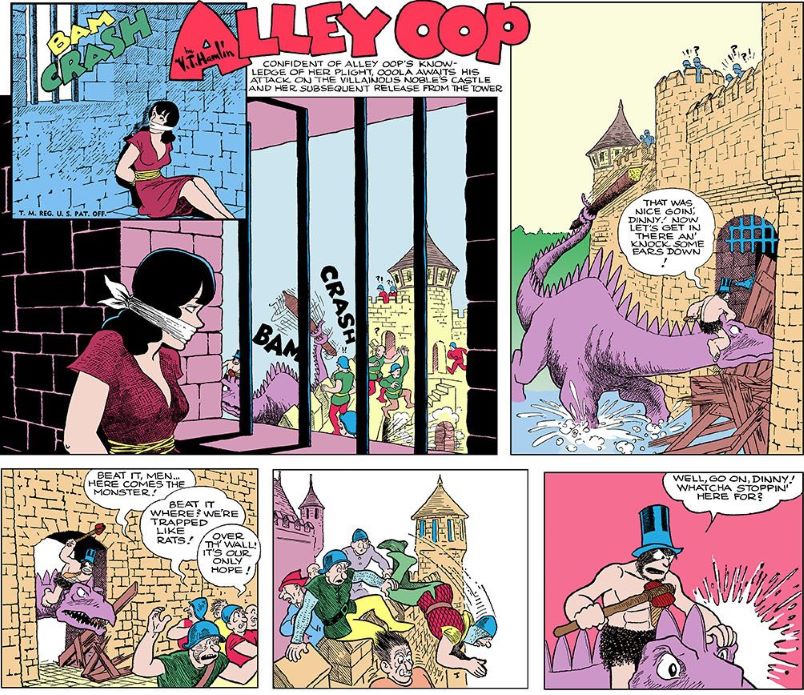
The variety of these adventures kept children and adults alike excited for each week’s installment, and they make the comic feel evergreen to new readers. Hamlin’s inspiration was the whole of human history, meaning Alley’s adventures are limited only by his author’s imagination. This last point is crucial, as Hamlin’s aim was not to depict everything with perfect historical accuracy. Instead, he aimed to feed the imagination, using historical events as backdrops for Alley’s adventures.
**********
Editorial cartoonist Bob Chambers and Halifax in Wartime
Through two world wars, Halifax was the anonymous “East Coast port” referenced in military dispatches, government statements and news reports, a censor-imposed vaguery that fooled no one.
Accessed by rail, its proximity to both North American manufacturing hubs and the fighting overseas, facilitated by a large, deep, protected, ice-free harbour, made the capital of Nova Scotia the ideal staging point for transatlantic convoys ferrying troops, equipment, munitions, food and other supplies critical to the Allied war effort.
At the Halifax Herald and Mail newspapers, illustrator and editorial cartoonist Bob Chambers was in high flight.
In the fall of 1943, the newspapers published a 25-cent booklet entitled Halifax in Wartime, with stirring copy by staff writer Frank Doyle and 12 illustrations by Chambers.
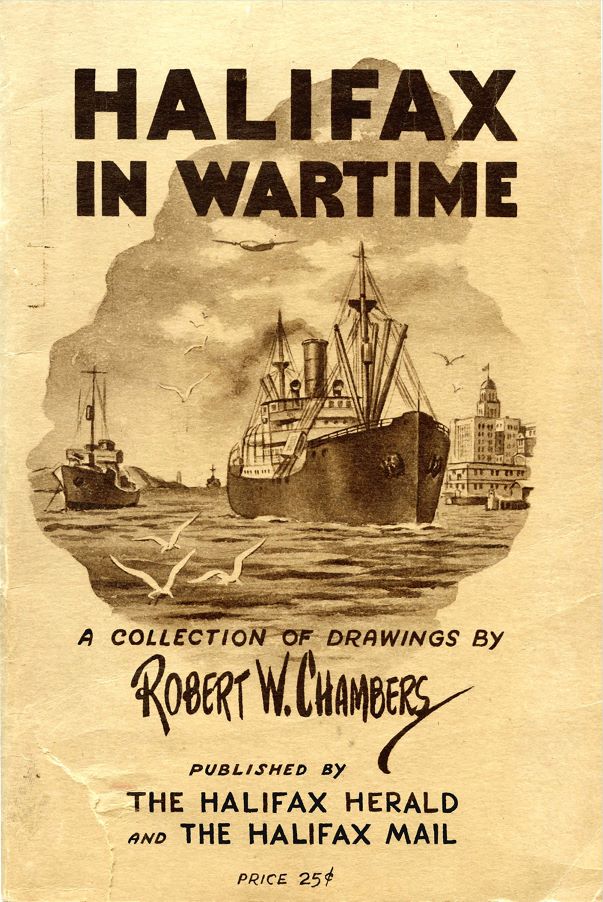
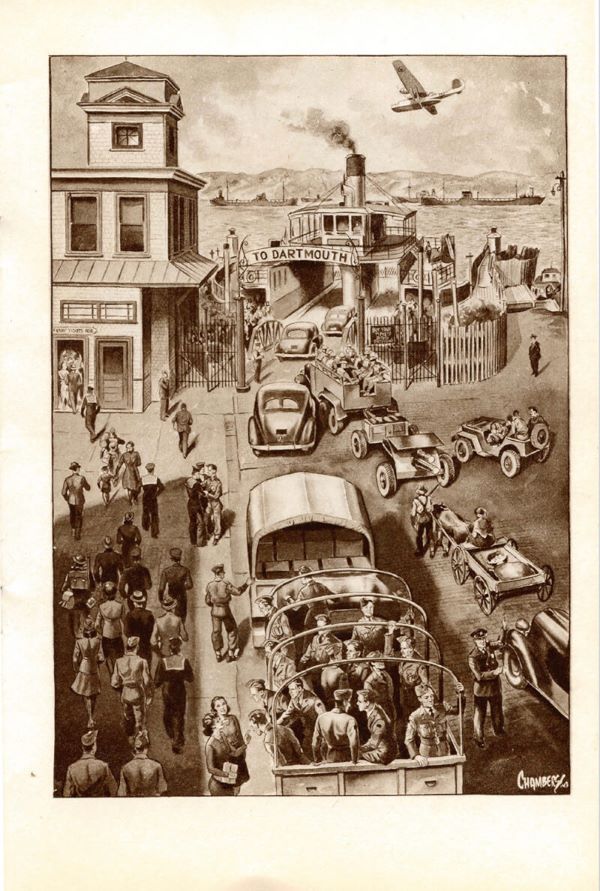
Over the course of 53 years, Chambers, as he was known, would become an institution throughout the Maritimes and, indeed, Canada, his editorial cartoons both gleefully anticipated and anxiously awaited, if not dreaded, depending on one’s station in society and politics.
(Outgoing Conservative premier Gordon Harrington told him after losing the 1933 provincial election: “You know Bob, you libeled me 23 times in 23 cartoons and I didn’t sue you. But I sure thought about breaking your nose.”)
**********
Walt Kelly, George Ward, Henry Shikuma and POGO
Of all the comic strips I’ve seen, not one has better lettering than Walt Kelly’s POGO.The strip has many fine qualities: excellent art, clever writing, charming characters, witty humor, canny satire, whimsy, wisdom…but that amazing, glorious lettering is what gets my attention first. Walt Kelly was a comics genius whose storytelling had many facets. His lettering is an important one, and he had help doing it from his assistants George Ward and Henry Shikuma, though Kelly himself always blue-penciled the lettering they produced.
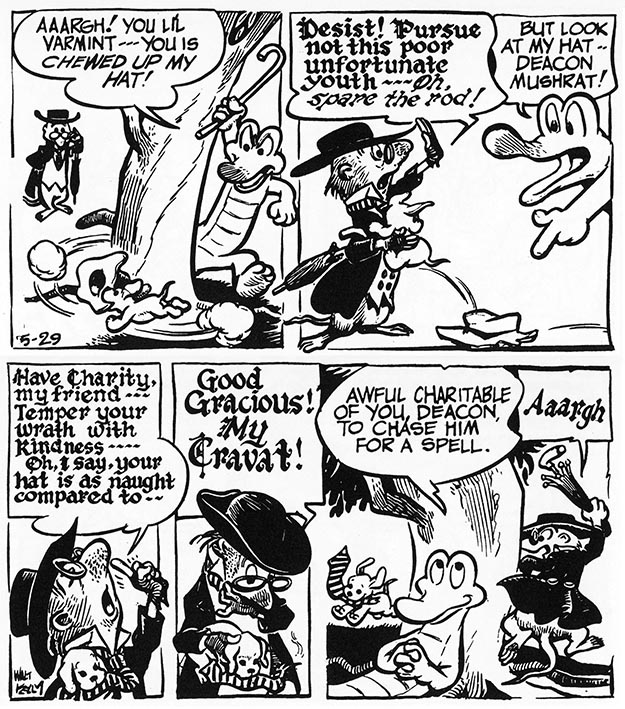
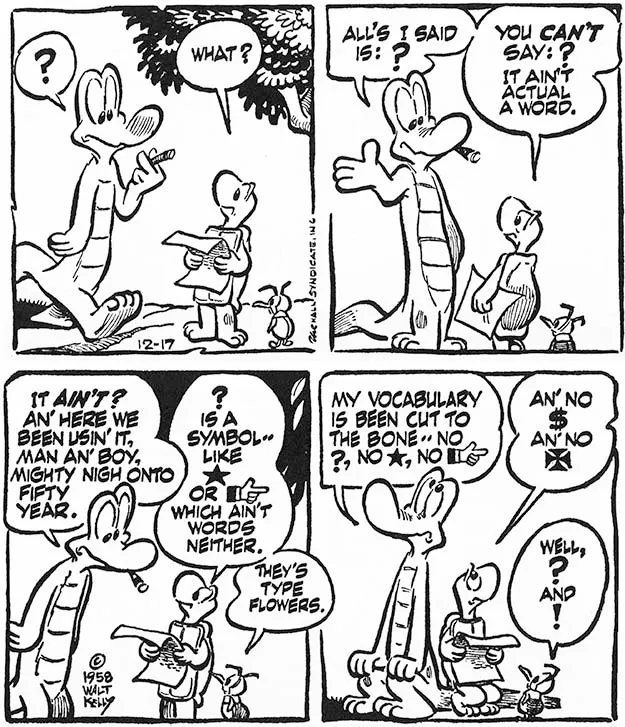
Letterer Todd Klein looks at the lettering of Walt Kelly, George Ward, and Henry Shikuma on Pogo.
Kelly passed on October 18, 1973 at age 60, losing a struggle with diabetes and alcohol … George Ward worked as a cartoonist and as a magazine staffer, including for Newsweek, for many years. He died on February 22, 2003 at the age of 82. Henry Shikuma died on November 25, 1985 in New York at the too-young age of 63. Together, these three men left a legacy of comics genius that will long be remembered.
**********
As They See Themselves
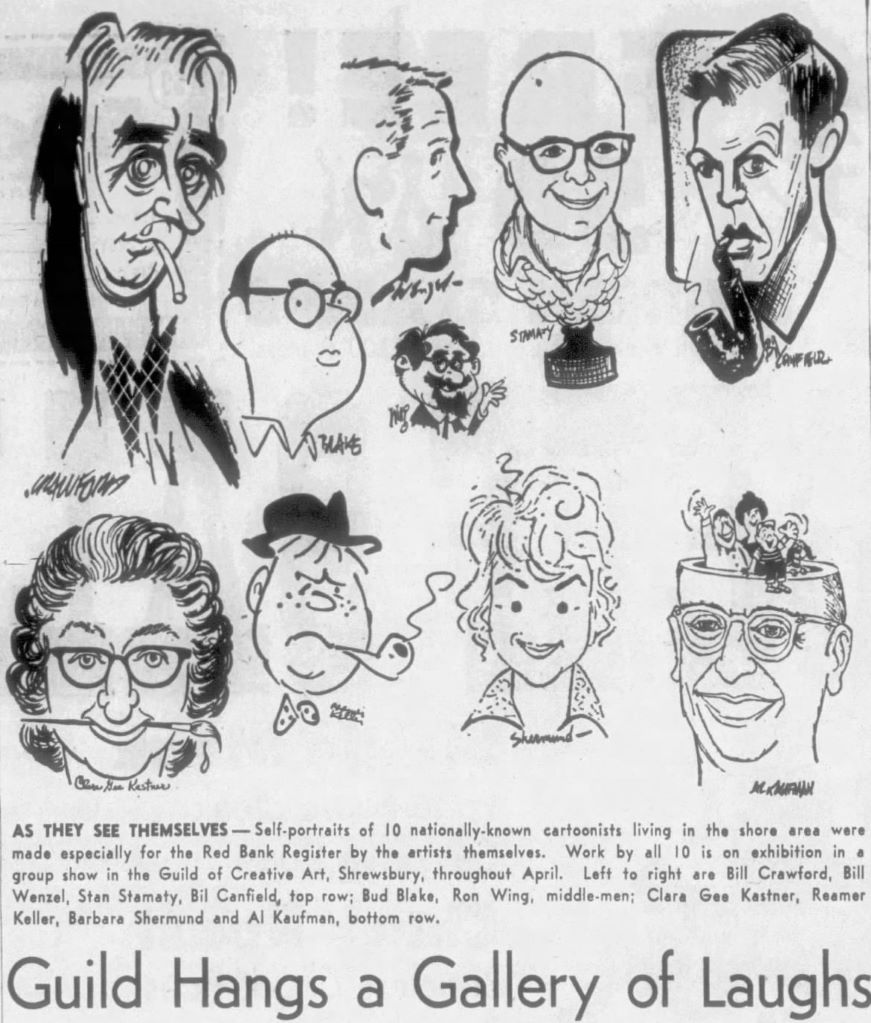
From the April 12, 1961 Red Bank Register comes a gallery of cartoonists’ self-caricatures featuring Bill Crawford, Bill Wenzel, Stan Stamaty, Bil Canfield, Bud Blake, Ron Wing, Clara Gee Kestner, Reamer Keller, Barbara Shermund, and Al Kaufman.
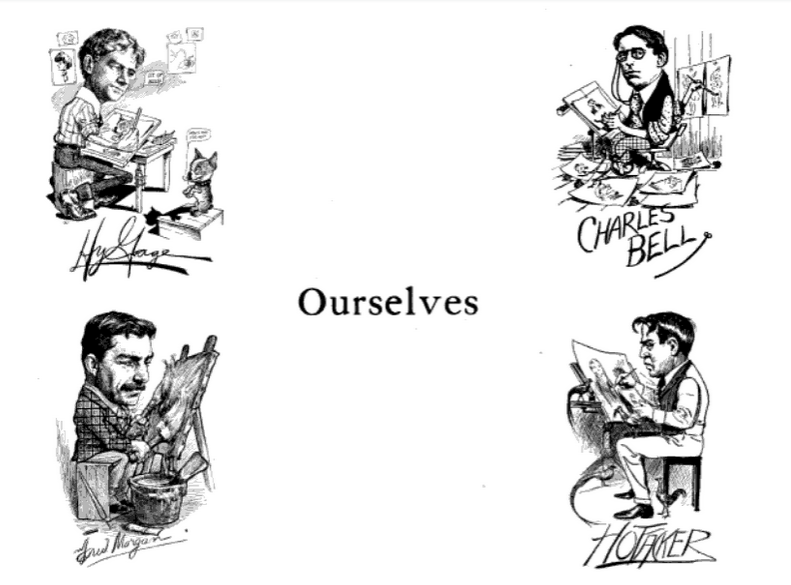
From way back when (source and date lost to the ages) are a quartet of Philadelphia cartoonist self-caricatures of Hy Gage, Charles Bell, Fred Morgan, and William F. Hofaker.


Comments
Comments are closed.